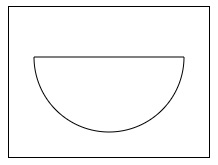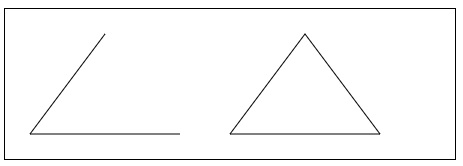
- HTML Canvas - Home
- HTML Canvas - Introduction
- Environmental Setup
- HTML Canvas - First Application
- HTML Canvas - Drawing 2D Shapes
- HTML Canvas - Path Elements
- 2D Shapes Using Path Elements
- HTML Canvas - Colors
- HTML Canvas - Adding Styles
- HTML Canvas - Adding Text
- HTML Canvas - Adding Images
- HTML Canvas - Canvas Clock
- HTML Canvas - Transformations
- Composting and Clipping
- HTML Canvas - Basic Animations
- Advanced Animations
- HTML Canvas API Functions
- HTML Canvas - Element
- HTML Canvas - Rectangles
- HTML Canvas - Lines
- HTML Canvas - Paths
- HTML Canvas - Text
- HTML Canvas - Colors and Styles
- HTML Canvas - Images
- HTML Canvas - Shadows and Transformations
- HTML Canvas Useful Resources
- HTML Canvas - Quick Guide
- HTML Canvas - Useful Resources
- HTML Canvas - Discussion
HTML Canvas - closePath() Method
The HTML Canvas closePath() method of CanvasRenderingContext2D interface adds a straight line to the current point and closes the current path.
If the path is already closed by the user, the method does not do anything. Even if there is a single path available on the Canvas element, there is no need to close that path.
Syntax
Following is the syntax of HTML Canvas closePath() method −
CanvasRenderingContext2D.closePath();
Parameters
It does not take any parameters and perform only a single operation every time.
Return value
The method when called by the context object completes the path by adding a straight line if it is not completed.
Example
The following example closes the arc drawn onto the Canvas using HTML Canvas closePath() method.
<!DOCTYPE html>
<html lang="en">
<head>
<title>Reference API</title>
<style>
body {
margin: 10px;
padding: 10px;
}
</style>
</head>
<body>
<canvas id="canvas" width="200" height="150" style="border: 1px solid black;"></canvas>
<script>
var canvas = document.getElementById('canvas');
var context = canvas.getContext('2d');
context.beginPath();
context.arc(100, 50, 75, 0, 1 * Math.PI);
context.closePath();
context.stroke();
</script>
</body>
</html>
Output
The output returned by the above code on the webpage as −

Example
The following program draws two triangles with two edges and closes one of it using the closePath() method.
<!DOCTYPE html>
<html lang="en">
<head>
<title>Reference API</title>
<style>
body {
margin: 10px;
padding: 10px;
}
</style>
</head>
<body>
<canvas id="canvas" width="450" height="150" style="border: 1px solid black;"></canvas>
<script>
var canvas = document.getElementById('canvas');
var context = canvas.getContext('2d');
// 1st triangle
context.beginPath();
context.moveTo(100, 25);
context.lineTo(25, 125);
context.lineTo(175, 125);
context.stroke();
context.closePath();
// 2nd triangle
context.beginPath();
context.moveTo(300, 25);
context.lineTo(225, 125);
context.lineTo(375, 125);
context.closePath();
context.stroke();
</script>
</body>
</html>
Output
The output returned by the above code on the webpage as −
